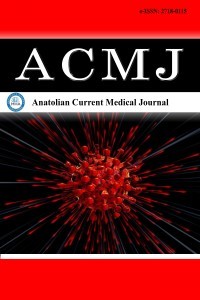1.
Costa HN, Esteves AR, Empadinhas N, Cardoso SM. Parkinson’s disease: a multisystem disorder. Neurosci Bull. 2023;39(1):113-124. doi: 10.1007/s12264-022-00934-6
2.
Li F, Harmer P, Fitzgerald K, et al. Tai Chi and postural stability in patients with Parkinson’s disease. N Engl J Med. 2012;366(6):511-519. doi:10.1056/NEJMoa1107911
3.
Mak MK, Wong-Yu IS, Shen X, Chung CL. Long-term effects of exercise and physical therapy in people with Parkinson disease. Nat Rev Neurol. 2017;13(11):689-703. doi:10.1038/nrneurol.2017.128
4.
Cheng FY, Yang YR, Chen LM, Wu YR, Cheng SJ, Wang RY. Positive effects of specific exercise and novel turning-based treadmill training on turning performance in individuals with Parkinson’s disease: a randomized controlled trial. Sci Rep. 2016;13(6):33242. doi:10.1038/srep 33242
5.
Reynolds GO, Otto MW, Ellis TD, Cronin-Golomb A. The therapeutic potential of exercise to improve mood, cognition, and sleep in Parkinson’s disease. Mov Disord. 2016;31(1):23-38. doi:10.1002/mds.26484
6.
Mak MKY, Wong-Yu ISK. Exercise for Parkinson's disease. Int Rev Neurobiol. 2019;147:1-44. doi:10.1016/bs.irn.2019.06.001
7.
Ascherio A, Schwarzschild MA. The epidemiology of Parkinson’s disease: risk factors and prevention. Lancet Neurol. 2016;15(12):1257-1272. doi:10.1016/S1474-4422(16)30230-7
8.
Boulos C, Yaghi N, El Hayeck R, Heraoui GN, Fakhoury-Sayegh N. Nutritional risk factors, microbiota and Parkinson’s disease: what is the current evidence? Nutrients. 2019;11(8):1896. doi:10.3390/nu11081896
9.
Cardoso SM, Empadinhas N. The microbiome-mitochondria dance in prodromal Parkinson’s disease. Front Physiol. 2018;9(9):471. doi:10.3389/fphys.2018.00471
10.
Xu X, Fu Z, Le W. Exercise and Parkinson’s disease. Int Rev Neurobiol. 2019;147:45-74. doi:10.1016/bs.irn.2019.06.003
11.
Hashimoto H, Takabatake S, Miyaguchi H, Nakanishi H, Naitou Y. Effects of dance on motor functions, cognitive functions, and mental symptoms of Parkinson’s disease: a quasi-randomized pilot trial. Complement Ther Med. 2015;23(2):210-219. doi:10.1016/j.ctim.2015.01. 010
12.
Kaya K, Ozel S. Parkinson hastalığı rehabilitasyonu. Turkish J Geriatr. 2008;12(1):36-48
13.
Li G, Huang P, Cui SS, et al. Mechanisms of motor symptom improvement by long-term Tai Chi training in Parkinson’s disease patients. Transl Neurodegener. 2022;11(1):6. doi:10.1186/s40035-022-00280-7
14.
Zhu M, Zhang Y, Pan J, Fu C, Wang Y. Effect of simplified Tai Chi exercise on relieving symptoms of patients with mild to moderate Parkinson's disease. J Sports Med Phys Fitness. 2020;60(2):282-288. doi: 10.23736/S0022-4707.19.10104-1
15.
Hackney ME, Earhart GM. Tai Chi improves balance and mobility in people with Parkinson disease. Gait Posture. 2008;28(3):456-460. doi:10. 1016/j.gaitpost.2008.02.005
16.
Yang Y, Hao YL, Tian WJ, et al. The effectiveness of Tai Chi for patients with Parkinson's disease: study protocol for a randomized controlled trial. Trials. 2015;16(1):111. doi:10.1186/s13063-015-0639-8
17.
Li F, Harmer P, Liu Y, et al. A randomized controlled trial of patient-reported outcomes with Tai Chi exercise in Parkinson's disease. Mov Disord. 2014;29(4):539-545. doi:10.1002/mds.25787
18.
Yazıcıoğlu Y, Erdoğan S. SPSS uygulamalı bilimsel araştırma yöntemleri. Ankara: Detay Yayıncılık; 2004.
19.
Goetz CG, Poewe W, Rascol O, et al. Movement disorder society task force on rating scales for Parkinson's disease. Movement disorder society task force report on the Hoehn and Yahr staging scale: status and recommendations. Mov Disord. 2004;19(9):1020-1028. doi:10.1002/mds.20213
20.
Sahin F, Yilmaz F, Ozmaden A, et al. Reliability and validity of the Turkish version of the Berg balance scale. J Geriatr Phys Ther. 2018;31(1): 32-37. doi:10.1007/s10882-017-9584-7
21.
Podsiadlo D, Richardson S. The Timed Up and Go: a test of basic functional mobility for frail elderly persons. J Am Geriatr Soc. 1991; 39(2):142-148. doi:10.1111/j.1532-5415.1991.tb01616.x
22.
Nocera JR, Stegemöller EL, Malaty IA, Okun MS, Marsiske M, Hass CJ. Using the Timed Up & Go test in a clinical setting to predict falling in Parkinson’s disease. Arch Phys Med Rehabil. 2013;94(7):1300-1305. doi: 10.1016/j.apmr.2013.02.020
23.
Giladi N, Shabtai H, Simon ES, et al. Construction of freezing of gait questionnaire for patients with parkinsonism. Parkinsonism Relat Disord. 2000;6(3):165-170. doi:10.1016/s1353-8020(99)00062-0
24.
Duncan RP, Combs-Miller SA, McNeely ME, et al. Are the average gait speeds during the 10 meter and 6 minute walk tests redundant in Parkinson disease? Gait Posture. 2017;52:178-182. doi:10.1016/j.gaitpost. 2016.11.033
25.
Zhou M, Shao Y. A Powerful Test for Multivariate Normality.J Appl Stat. 2014;41(2):351-363. doi:10.1080/02664763.2013.839637
26.
Yang F, Trolle Lagerros Y, Bellocco R, et al. Physical activity and risk of Parkinson’s disease in the Swedish National March Cohort. Brain. 2015; 138(2):269-275. doi:10.1093/brain/awu323
27.
LaHue SC, Comella CL, Tanner CM. The best medicine? The influence of physical activity and inactivity on Parkinson’s disease. Mov Disord. 2016;31(10):1444-1454. doi:10.1002/mds.26728
28.
Chen Y, Qin J, Tao L, et al. Effects of Tai Chi Chuan on Cognitive function in adults 60 years or older with type 2 diabetes and mild cognitive impairment in China: a randomized clinical trial. JAMA Netw Open. 2023;6(4):e237004. doi:10.1001/jamanetworkopen.2023.7004
29.
Ernst M, Folkerts AK, Gollan R, et al. Physical exercise for people with Parkinson’s disease: a systematic review and network meta-analysis. Cochrane Database Syst Rev. 2023;1(1):CD013856. doi:10.1002/14651858.CD013856.pub2
30.
Yu X, Wu X, Hou G, et al. The impact of Tai Chi on motor function, balance, and quality of life in Parkinson’s disease: a systematic review and meta-analysis. Evid Based Complement Alternat Med. 2021;2021: 6637612. doi:10.1155/2021/6637612
31.
He G, Zhang X, Yan T, et al. The efficacy of Tai Chi for depression: a protocol for systematic review and meta-analysis. Medicine (Baltimore). 2022;101(5):e28330. doi:10.1097/MD.0000000000028330

